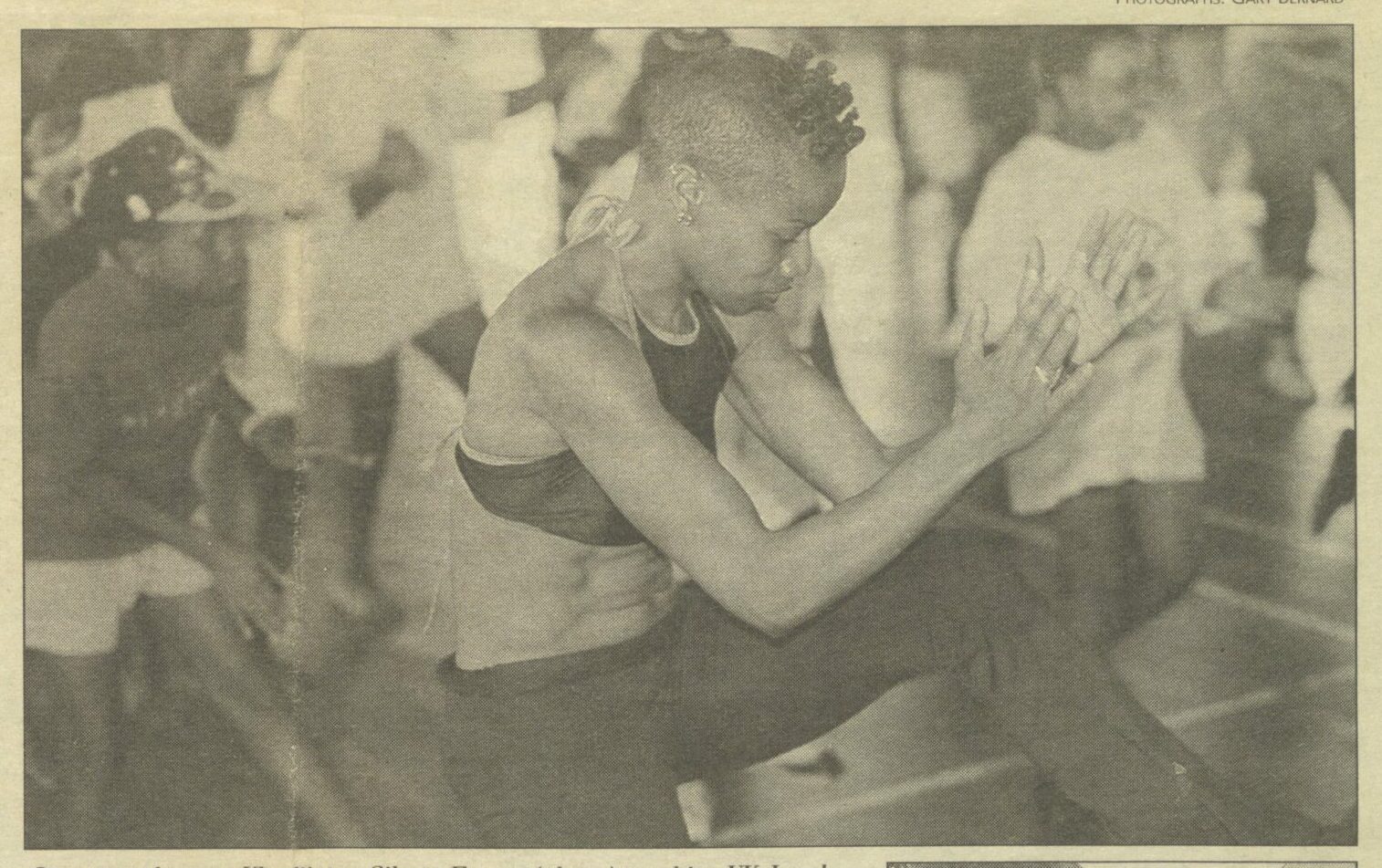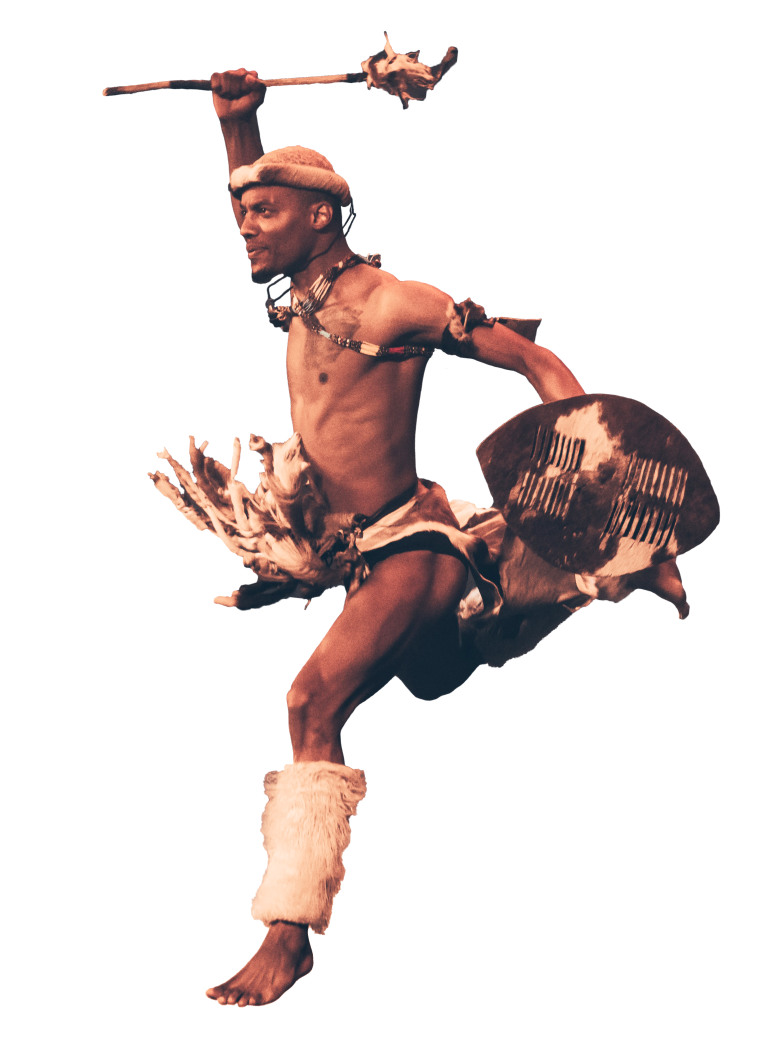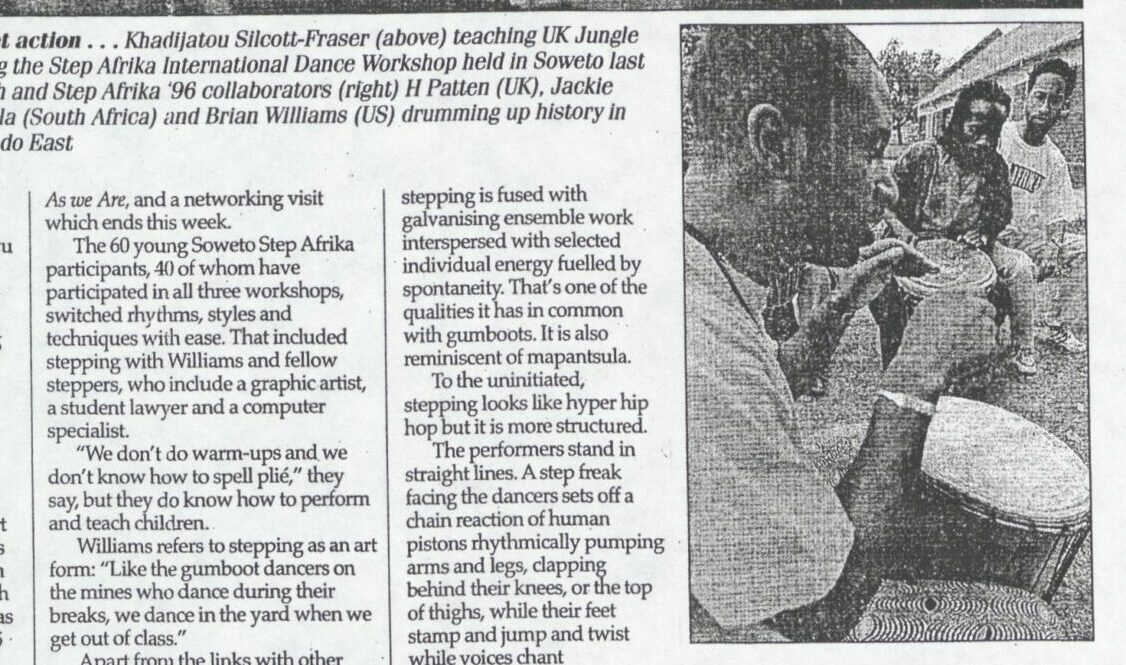On January 14, 1997, The Star published the article “Stepping into history with the three Cs” about the third delegation to Step Afrika!’s International Cultural Festival in Johannesburg, shining a spotlight on Step Afrika!’s pillars of culture, curiosity, and commitment.
Stepping into history with the three Cs
Written by Adrienne Sichel for The Star, January 14, 1997
“…So many vital historic and aesthetic sources merged at the final presentation of the 1996 Step Afrika international dance workshop on December 20. Parents seated on yellow plastic chairs crammed in front of the stage to watch their children show the things they had learned during two weeks with their teachers from England, Jamaica, and the United States. Not forgetting the Soweto Dance Theatre faculty and gumboot maestros Simon Nkosi and The Creators.
Jackie Mbuyiselwa Semela, the director of Soweto Dance Theatre, explained in the introduction that one of the objectives of this three-year-old initiative was “to make sure we don’t lose the essence of who we are, the essence of the soul, so we can become ourselves”. That may sound like a conundrum, but the workshop process and the revelatory performance bore this out.
Step Afrika, which has a site on the Internet, was born when marketing man Brian Williams was living in Lesotho on a fellowship. He saw two men doing a dance —in gumboots — which seemed very similar to the stepping that he learned in the United States and practiced with his fraternity brothers at Howard University in Washington DC. There’s no way to catch up on the complex socio-political and cultural background of stepping in 10 minutes. The answer lay ina newly published book tucked under Williams’s arm. Steppin’ on the Blues: The Visible Rhythm of African American Dance by Jacqui Malone.
This dance form is part of the African-American college fraternity tradition dating back to 1906. Black Americans were not admitted to white fraternities so they formed their own, Alpha Phi. Stepping has flourished and even formed part of the opening ceremony of the Olympics in Atlanta last year. The Soweto Connection was made in Johannesburg in 1994 when Williams attended the launch of the Rand Water Board’s Manzi/Metsi cultural competition at the Johannesburg Civic theatre which featured the Soweto Dance Theatre. The result was a partnership in search of common ground and gumboot, between the Washington-based steppers and the Sowetans.
Step Afrika was first held at the Ipelegeng Centre in White City Jabavu in December 1994, The Americans paid their own way. Last year, the 11-strong contingent, including a video maker and a writer, received funding from the AUS Artists at International Festivals and Exhibitions Fund.

Khadijatou Silcott-Fraser (above) teaching UK Jungle during the Step Afrika International Dance Workshop held in Soweto
The 60 young Soweto Step Afrika participants, 40 of whom have participated in all three workshops, switched rhythms, styles and techniques with ease. That included stepping with Williams and fellow steppers, who include a graphic artist, a student lawyer and a computer specialist.
“We don’t do warm-ups and we don’t know how to spell plié,” they say, but they do know how to perform and teach children. Williams refers to stepping as an art form: “Like the gumboot dancers on the mines who dance during their breaks, we dance in the yard when we get out of class.” Apart from the links with other African cultural traditions Step Africa, with its organic beginnings, is also an attempt by Howard University students and graduates to raise the status of stepping as a national artform and a national treasure.
The community bonding spirit of stepping is fused with galvanizing ensemble work _ interspersed with selected individual energy fuelled by spontaneity. That’s one of the qualities it has in common with gumboots. It is also reminiscent of mapantsula. To the uninitiated, stepping looks like hyper hip hop but it is more structured.
The performers stand in straight lines. A step freak facing the dancers sets off a chain reaction of human pistons rhythmically pumping arms and legs, clapping behind their knees, or the top of thighs, while their feet stamp and jump and twist while voices chant spasmodically. This inter-continental project has also produced its own art work. The large painting was created by dazzling stepper and “polyrhythmic” painter Charles Nelson and young Swazi artist Alexander Maphalala with input from the workshop _ children. Half of the painting was left with the Soweto Dance Theatre while the other half went to the US. Step Afrika has incredible potential grounded in the three Cs: cultural curiosity and commitment.
VIEW THE FULL 1997 ARTICLE HERE

Be A Part of Our History
Founded in 1994 by C. Brian Williams, Step Afrika! is the first professional company dedicated to the tradition of stepping. Under Mr. Williams’ leadership, stepping has evolved into one of America’s cultural exports, touring more than 60 countries across the globe. To share your Step Afrika! story, visit stepafrika.org/about/. Step Afrika!'s 30th Anniversary Timeline is made possible by the generous funding of Bloomberg Philanthropies, with additional support from the Mellon Foundation and the DC Commission on the Arts and Humanities.
ATTEND A PERFORMANCE
Get TicketsSUPPORT OUR PROGRAMS
Donate NowSTEP AFRIKA! EDUCATION
Learn MoreLEARN ABOUT STEP AFRIKA!
Learn More

 Back to Timeline
Back to Timeline
 Previous Moment
Previous Moment